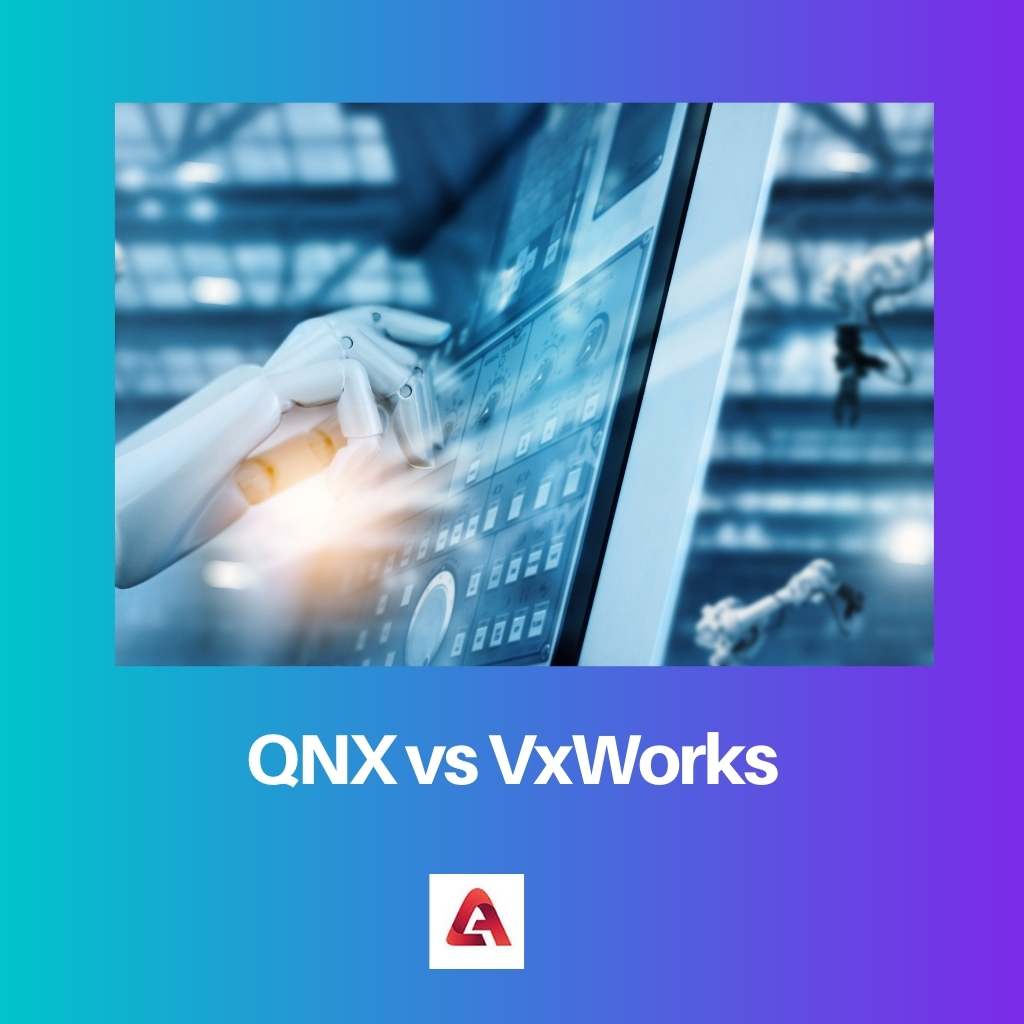The operating system is the most essential software that is required for a computer to work. It consists of the basic boot-up files that start the computer and allow people to work on the computer.
Without an operating system, only the hardware of the system would work and the computer would not be operable.
Key Takeaways
- QNX and VxWorks are real-time operating systems designed for embedded systems.
- QNX features a microkernel architecture, which separates system components for greater fault tolerance.
- VxWorks uses a monolithic kernel architecture, which may provide better performance in certain situations.
QNX vs VxWorks
The difference between QNX and VxWorks is that QNX is a commercial operating system that functions on a real-time message passing system. On the other hand, VxWorks is a proprietary operating system that works on shared memory architecture between different devices and operates on a real-time mode of operation.

QNX is a commercial operating system and is designed primarily for use in an enterprise resource management system. The operating system functions on a real-time message passing architecture and maintains scheduling operations between devices.
The design was developed in the early 1980s by Quantum Software Systems which is a Canada-based company.
VxWorks is a proprietary operating system developed by Wind River Systems which is a California-based company. The system operates on shared memory architecture and runs on a real-time mode of operation.
The operating system offers higher speeds to its users due to the use of a single address space kernel system.
Comparison Table
| Parameters of Comparison | QNX | VxWorks |
|---|---|---|
| Definition | QNX is a commercial operating system that operates on a real-time message passing architecture | VxWorks is a proprietary operating system that functions on a real-time shared memory architecture |
| Operating system | QNX works on a microkernel operating system | VxWorks operate on a monolithic operating system |
| Operational method | It requires a set of operating dependencies to manage the resource planning OS | The operating system offers the same space, single address kernel, which provides higher speeds to the users |
| Function | It is used in resource planning and management on an enterprise resource planning system | It is primarily developed for scheduling operations on a machine network |
| Developed by | QNX is developed by Quantum Software Systems | VxWorks is developed by Wind River systems |
What is QNX?
QNX is a commercial operating system that was designed in the early 1980s by Quantum Software Systems, as a tool to help inventory planning and management solutions to commercial business establishments.
The operating systems function on a message-passing architecture by sending command functions to all the devices connected. This operates on a real-time mode of operation giving quick access to the users.
The system is designed over a microkernel OS. The microkernel is a small operating system that is used to send basic commands of operation to other devices, which include communication between the devices as well as thread management for various processes.
For achieving this, the system requires a set of software dependencies, which lays the foundation of the operations that are to be completed by the system.
This type of system is primarily used for managing inventory and controlling the related operations in the resource management system.
As the set of operations is limited to a single department, the system can be implemented on a single server for operating over the functions.
In a QNX system, all the processes function on a priority basis. Thus the operation with the highest priority is completed first and other operations follow this sequence.
What is VxWorks?
VxWorks is a proprietary operating system developed by Wind River systems to provide a tool for scheduling operations in an enterprise management scenario.
Thus it is primarily used for implementing enterprise management systems and can be customized according to the needs.
The system operates on a shared memory architecture, in which all the devices are located over one memory space. This gives the system access to different devices over the server, allowing the system to provide higher speeds to the users.
The entire operation functions on a real-time mode of operation which provides a quick access feature to the system. The operating system is designed over a monolithic kernel.
Monolithic kernel architectures are useful for managing user-defined command functions, which may sometimes include communication between different devices and auxiliaries.
Thus as it is a shared memory architecture, the system features a private address space for the entire memory distributed among different devices.
The user can monitor the different operations of an enterprise management system using this operating system, as well as input the various scheduling commands which can then be operated using the scheduling algorithms of the OS.
There are two types of scheduling algorithms that VxWorks operates over, round-robin scheduling and priority-based scheduling.
Main Differences Between QNX and VxWorks
- QNX operating system operates over a message passing architecture. VxWorks operating system operates over shared memory architecture.
- QNX is designed on a microkernel operating system. VxWorks is designed on a monolithic operating system.
- QNX requires a set of dependencies for implementing the operating system. VxWorks operates over single address architecture. Thus it provides higher speeds to the users.
- QNX is primarily used for resource planning and inventory management operations. VxWorks is primarily used for scheduling operations on a machine network.
- QNX was designed by Quantum Software Systems. VxWorks was designed by Wind River systems




